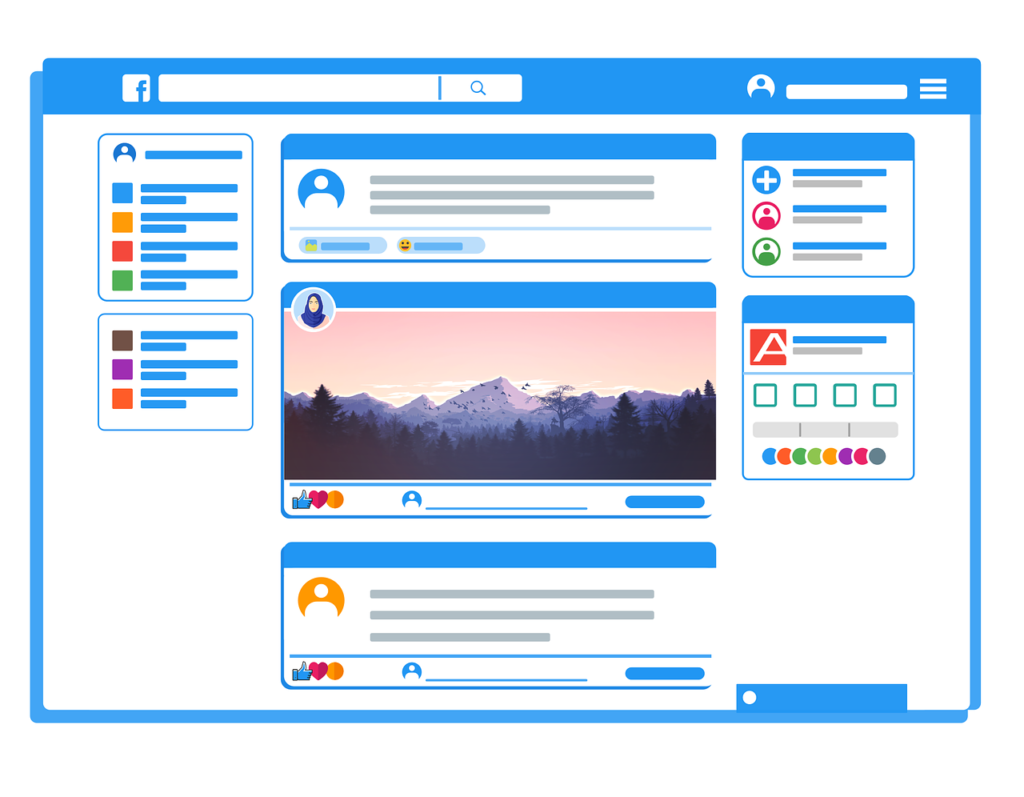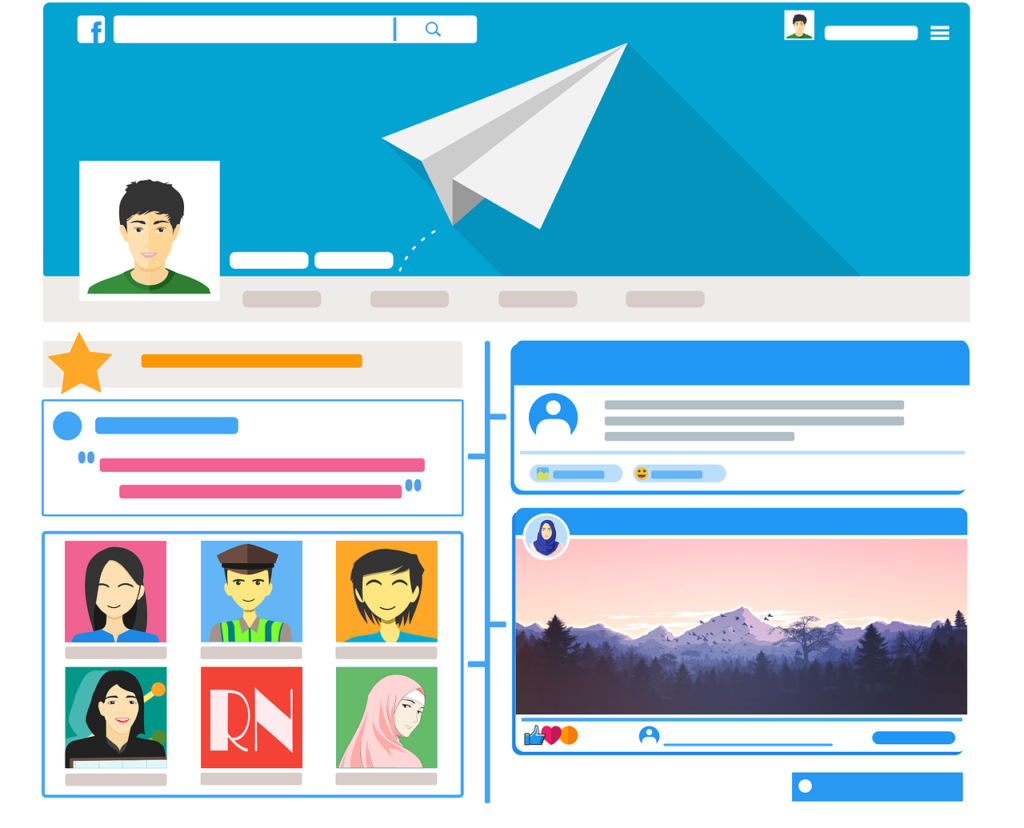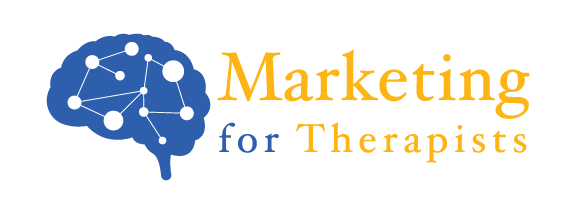
As a therapist, there are three main mistakes you’re likely to make with social media.
Mistake One
The first mistake (and largest) mistake is stumbling into a legal or ethical violation.
Did you accidentally indicate that a follower is actually a client? Well, you may have just tweeted yourself into a meeting with the licensing board.
The good news is that this mistake is pretty easy to avoid as long as you’re careful and do some homework. Dr. Keely Kolmes has also written some excellent resources on the ethics of social media if you care to dive deeper.
Mistake Two
The second mistake is investing time and effort then quitting before you see results.
Like most things in life, social media requires sustained effort. A social media account with three posts and no followers is not going to help you. In order to build a quality profile, you need to invest the time to write quality content. You need to follow other people and engage in discussions, you need to learn the hashtags that matter for your areas of specialty, and you need to keep the posts flowing week after week.
In other words, you need to put in lots of hours — hours that you could be spending improving your website, studying new therapy techniques, or just practicing some self-care. And you need to keep putting in those hours in order to see continued results.
As you might imagine, many therapists get discouraged along the way. They put lots of valuable hours in up front, but then real life gets busy or a creative block hits or it’s just not fun anymore. So then they abandon their profiles, and never see a return on the hours they invested.
The good news is that there are ways to make your social media efforts much easier to maintain over the long term – just keep reading 🙂
We also offer a full-fledged social media service you’d like to totally delegate your social media. I’ll talk more about that later, but you can also tap the button below if you’re curious now!
Mistake Three
And the final mistake is to ignore social media all together.
Now, don’t get me wrong. There are plenty of therapists who are doing just fine without social media. So if your marketing is already working great, then yes, you can ignore social media.
But if you’re struggling to grow your practice and fill your caseload, social media could be a critical missing ingredient. Here’s why
Why Therapists Should Care About Social Media

In order to understand the importance of social media, you need to put yourself in the shoes of a potential client.
They’ve made the decision to trust a stranger with a big problem in their life. Maybe it’s a problem that is causing them a huge amount of pain. Maybe it’s a problem they’ve tried and failed to solve on their own. Maybe it’s something that has built up for months until they finally decided they were ready to try therapy.
Whatever their issue, it’s clear it’s very important to them. And so the decision of which therapist to trust also feels really important.
Now imagine they’ve begun their search for a therapist and found you. But they’re still on the fence. Maybe they’ve found a few other therapists that also seem qualified. What would cause them to choose you instead of someone else?
If you answered “my website”, you’re partially right. Having a professional looking website is really important for establishing credibility. And having well-written content is essential for demonstrating expertise.
But your website is static, and limited in how intimate it can be. Social media, in contrast, gives you the chance to make a deeper connection with your prospective clients. It lets you show them a warmer, more vibrant side of yourself. And for an uncertain client, your social media presence can absolutely be the deciding factor that causes them to choose you.
Social Media Success (without losing your mind)
So when it comes to social media, the strategy becomes pretty clear
1) Create a social media presence that helps clients feel confident about choosing you as their therapist
2) Invest as little time as possible, so you’re able to stay committed for the long run
3) Avoid losing your license to an ethical issue!
The good news is that once you’ve identified your strategy, actually implementing it is pretty easy. I’ve outlined a two-part plan below which gets you most of the way there without much time (a few hours to set up, and then an hour or two a month.)
For this plan, you’ll use Linkedin and Twitter, and ignore everything else.
Like it or hate it, LinkedIn is an essential tool for professional connections. And by professional connections, I mean “people who will help you find a job.”
It’s also handy for establishing your professional credibility in general, which is useful if you want to be invited to speak at a conference or teach a CE course. So even if you’re not planning on job hunting anytime soon, LinkedIn is still worth a visit.
My LinkedIn strategy is pretty straightforward.
1) Set up a killer profile
2) Check it once a year and update if needed
3) Connect with colleagues. (Don’t connect with clients!)
2) and 3) are pretty self-explanatory. But 1) takes a little explanation.
How To Make A Fantastic LinkedIn Profile
An excellent profile is not that difficult to make. Here’s what you need to do.
Step One: Get a professional photo
Just do it. There’s no excuse for a crummy photo
Step Two: Fill out your experience
The experience section of your LinkedIn is essentially a resume. There’s hundreds of resume guides online, so follow the advice in them and you’ll be fine. The important thing is to just do it — it looks bad if you have an empty experience section.
Step Three: Write a fantastic summary
This is where you’ll be spending most of your time with LinkedIn.
Your summary is the first thing people read, and it’s the only thing most of them will read.
So make it good.
Put it in first person. Everyone knows that you wrote it yourself so it’s weird if your summary says “Dr. Cruz is a psychotherapist specializing in blah blah blah”
Tell a story. Don’t give bullet points, and don’t just summarize your resume. Instead, give a sense of who you are. Talk about your specialties, your passions, your strengths.
Also, have an intended audience in mind. What kind of person do you most want to impress with your LinkedIn summary? Is it possible employers? Conference organizers? Colleagues? Keep that intended audience in mind as you write.
An easy way to make this work is to have a three paragraph format.
Your first paragraph should be just one sentence long. It should summarize the absolutely most essential information about you.
Your second paragraph tells the story of your work history. Key word here is STORY. Don’t tell every detail — just give the most important information.
Finally, your last paragraph should summarize your skills and strengths. This is your chance to talk about the things you’re really good at, and the areas where you’re passionate.
Optionally, you can conclude with a single sentence call to action.
Here’s what this looks like:
LinkedIn Summary Example
“I’m Doctor Smith, and I have been helping clients overcome anxiety for over a decade.
I currently lead the Acme anxiety clinic, where I manage a team of seven licensed clinicians, as well as one pre-doctoral intern. I also consult with the local city council on a public mental health outreach program that has reduced involuntary psychiatric holds by 30%.
I’m deeply passionate about the work that I do, and I thrive on the opportunity to help clients achieve freedom from their anxiety. I also love investing in the development of other clinicians, and cherish the opportunity to lead my colleagues at the Acme clinic.
I’m available to speak on best practices for anxiety treatment, and I encourage you to email me at smith@example.com if interested.”
Make sense? If not, here’s a quick refresher:
- Write a great summary,
- Get a professional photo,
- Fill out your experience, and
- Update it every year or so.
Easy, right? Now, let’s tackle Twitter.
Now, on to Twitter.
LinkedIn mattered because of your opportunity to connect with colleagues. Twitter matters because of your opportunity to connect with clients. Other platforms can also help you with this, but Twitter is preferred because you can get away with short text posts – whereas Facebook and Instagram require longer posts and usually images/video to drive engagement.
Of course, you’re not going to communicate directly with clients on Twitter — remember your ethics! But your clients are naturally curious about their therapists, so if you have a Twitter profile, some of your clients will find it and read it (especially if you link to it from your homepage.)
This creates an opportunity for you. Most clients are looking for a therapist who they can connect with. If your Twitter account demonstrates some of your personality, you might help a prospective client feel as though they can connect with you. Or if you are able to share insightful thoughts that show your expertise, clients might feel you are a trustworthy expert.
Of course, you don’t want to go overboard here. You want to remain professional even while you show personality. If in doubt, have a friend or colleague look through your posts before you send them. But if your Twitter account gives clients a sense of who you are, it might make them more likely to book an initial session with you.
Also, a word on ethics: Even though your clients might be reading your Twitter, you should not use Twitter to communicate with clients, and you shouldn’t follow your clients (even if they follow you first.) And of course, don’t discuss clients on Twitter, even if you remove identifying information. If you share a story about a client on Twitter, you run the risk that client will read it. As before, Dr. Keely Kolmes is a great resource here.
Connect With Colleagues On Twitter
Of course, you can use Twitter for professional connections, too. It’s a bit less formal than LinkedIn, so it’s a nice way to establish friendly connections with colleagues.
Twitter is an especially good way to keep connected with other clinicians that you meet at workshops or conferences. Swapping business cards is nice, but it’s easy to lose contact. However, if you follow someone on Twitter (or they follow you), you’ll keep popping up in each other’s feed on occasion. This keeps the connection warm, and makes it easier to reestablish contact later.
Plus, if you speak at a conference or workshop, you can put your Twitter in your professional bio. That’s an easy way to build followers and start to establish some credibility.
If you read other guides on Twitter, they’ll sometimes talk about becoming a “thought leader” on Twitter. This is mostly hogwash. Nobody is going to suddenly offer you a book deal because you’ve got 50 followers, or even 5,000 (get to 500,000 and maybe you’ll start getting offers, but that’s way beyond the scope of this guide.) Use Twitter as a tool to connect with your existing colleagues, and don’t worry too much about being a “thought leader.”
Twitter In One Hour A Month
Ok, so how do you use Twitter without it wasting your time?
Simple. The answer is a scheduling tool like Buffer or Hootsuite. nifty website called Buffer. Both allow you to write a bunch of Twitter posts at once, and then send them out over time. So you can write 8 posts, schedule to send out one a week, and you’re set for two months. Your Twitter account stays active, but you don’t need to touch it. Best of all, both tools are free and super easy to use. (They also offer paid plans, of course, but you should be fine with their free versions.)
What do you write your posts about? Well, I recommend a mix:
- Send out some links to helpful resources. For instance, you might tweet a link to a helpful book or article about coping with depression.
- Share an inspirational or encouraging quote
- Write your own inspirational or encouraging thoughts
- Share a link to a song you like
- Share a funny video
- Share some of your thoughts about being a therapist
Again, keep it professional — but show some of your personality, and try to be helpful. You’ll get the hang of it pretty soon. If you’re not sure what to write about, ask some friends, or look at what other therapists are doing.
Promoting Your Twitter Profile
I’ll be brief here. In order to promote your Twitter profile:
- Link to it from your Linkedin and your website
- Put it in your bio when you present at a conference
- Add it to your business cards
Is there more you can do? Sure — and if you want to build your follower list, there are tons of guides online that will teach you how to grow a following on Twitter. But it’s probably not worth your time.
In other words, here’s the official MarketingForTherapists.org Twitter plan:
- Stay professional, but let your personality shine through
- Use a scheduling tool to schedule several weeks (or months) of posts in advance. Once it runs dry, write another batch.
- Get off Twitter and do something meaningful with your life!
Everything Else
Ok, what about everything else? What about Facebook or Pinterest or whatever newfangled social network is popular today?
My advice is simple: Ignore them. Your biggest ROI for your time is in LinkedIn and Twitter. All of the other platforms require you to produce photos or video, making it much harder to keep up with your posting schedule.
Of course, if there is a good reason for you to ignore this advice, then go ahead! If your colleague has had great success with a Facebook page for her clinic, give it a try. If you’re a wiz with a camera and you think you could be successful on Instagram, feel free to try it out.
But treat it as an experiment. Keep track the hours you are putting into this new social media platform, and be careful to record everything. (Ten minutes here and there adds up over time.) After your new platform has been running for a few weeks, look at your results and compare it to the hours you’ve invested.
Ask your new clients (during the scheduling process, not their actual sessions) if social media played a role in their decision to choose you. If you’re not getting the results you need, either change your strategy or invest your time elsewhere.
Supercharge Your Social Media
The LinkedIn/Twitter strategy gives you the biggest return for each hour that you invest. But you still have to put in several hours to make it work, and remember to stay consistent. So you might be looking for someone to just totally take the social media responsibility off your plate.
Or, you might be interested in going beyond the low-hanging fruit and really using social media to supercharge your marketing. Following the passive Twitter and Facebook strategy is easy enough for anyone. But showing up well on Facebook or Instagram, and actively working to grow your follower base and engagement – that requires both time and expertise that most therapists don’t have.
In either case, our professional social media management services might be just what you’re looking for. We handle everything for you, letting you focus on what matters most to your practice. And we customize everything we post for you, so you sound like you, not a cookie-cutter therapist.
And our social media management services are affordable, too. If our services result in you getting just one new client per quarter, they will likely have paid for themselves.
If you’re interested, just tap the button below to learn more!
